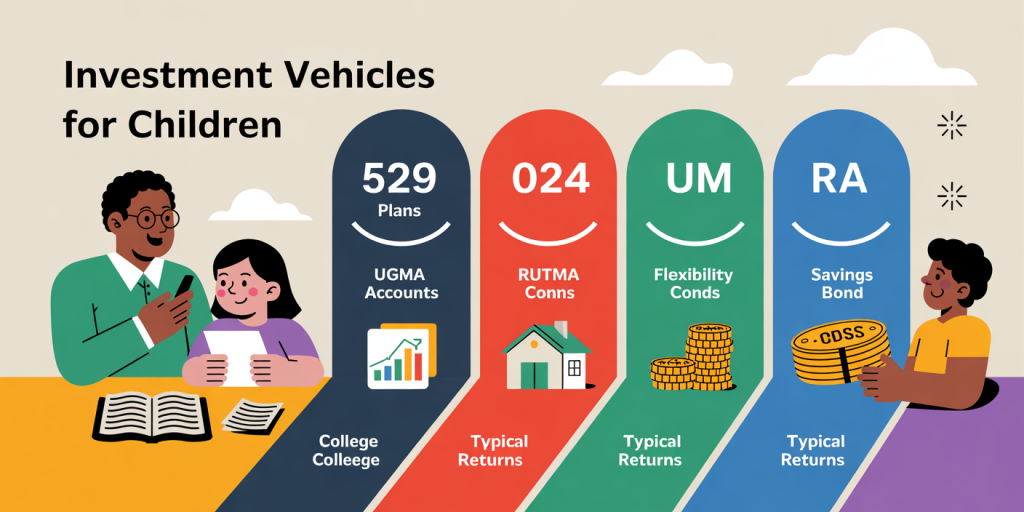How to Invest for Children: Building a Solid Financial Future
Raising children today involves not only providing love, care, and education but also planning strategically for their financial futures. The cost of higher education, housing, and even basic living expenses continues to rise, challenging many parents to secure a robust financial foundation for their offspring. Investing for children is one essential way to mitigate future economic stress and foster long-term financial independence.
With global wealth management analysts estimating that over $68 trillion will be transferred to younger generations in the coming decades, proactive investment can make a substantial difference. By starting early and selecting appropriate financial vehicles, parents and guardians can leverage time and compounding growth to create a significant nest egg. This article explores practical strategies, investment options, and data-backed insights to guide anyone interested in securing a solid financial future for children.

—
Understanding the Importance of Early Investment
Starting to invest for children as soon as possible offers an unparalleled advantage due to the power of compound interest. Albert Einstein famously called compound interest the eighth wonder of the world, and for good reason. For instance, if a parent invests $2,000 annually for ten years starting at the child’s birth with an average annual return of 7%, the investment could grow to over $33,000 by the time the child turns 18. Conversely, waiting until age 10 to begin investing cuts the total value by nearly half.
This early-start advantage is critical because it reduces the required annual contributions and allows more time for market fluctuations to smooth out. Many real-world cases emphasize this advantage. For example, a couple in California began a 529 college savings plan for their newborn daughter, contributing $200 monthly. By age 17, her college fund exceeded $50,000, covering nearly half the typical state university cost. Meanwhile, a similar family who delayed until the child was 10 struggled to meet comparable savings goals, often needing to finance the gap with loans.
Early investment also contributes psychologically to children’s understanding of money and financial responsibility. Some families even involve their children in the investment process, teaching them about stocks, bonds, and mutual funds, fostering habits that will benefit them lifelong.
—
Key Investment Vehicles for Children’s Financial Goals
Selecting the right investment vehicle is a critical step. Different tools serve distinct objectives, such as college education, long-term wealth, or a house down payment. Here are some popular options with practical examples:
529 College Savings Plans
Specifically designed to save for educational expenses, 529 plans offer tax advantages including tax-free growth and tax-free withdrawals when funds are used for qualified education costs. Many states provide additional tax deductions or credits for contributions. According to the College Savings Plans Network, as of 2023, 529 plans hold more than $500 billion in assets.
Case Example: Lisa in Texas used a 529 plan for her twins, contributing $300 monthly since birth. By high school, each child’s account balance reached roughly $45,000, alleviating parents’ worries about rising tuition costs.
Custodial Accounts (UGMA/UTMA)
These accounts allow adults to invest on behalf of minors and provide greater flexibility on fund usage than 529 plans. However, they lack some tax benefits and count as the child’s assets for financial aid purposes.
Example: John and his wife established a Uniform Gifts to Minors Act (UGMA) account when their son was five. They invested in a diversified portfolio including index funds and bonds, which they planned for his first home purchase at age 18.
Roth IRAs for Kids
Roth Individual Retirement Accounts are traditionally for retirement, but when children have earned income from work, they can contribute and benefit from tax-free growth and withdrawals. It is a relatively less common but powerful tool for kids who start working early.
Savings Bonds and CDs
For conservative investors, U.S. Savings Bonds or Certificates of Deposit offer government-backed security, albeit with lower returns. These are suitable when the goal is capital preservation rather than maximized growth.
—
Comparing Investment Options: A Table Overview
| Investment Vehicle | Tax Benefits | Flexibility of Funds | Typical Rate of Return (Annual) | Ideal Use |
|---|---|---|---|---|
| 529 College Savings Plan | Tax-free growth and withdrawals for education | Limited to qualified education expenses | 6-8% | College/university funding |
| UGMA/UTMA Custodial Account | No tax benefits except standard capital gains | Funds can be used for any purpose post-majority | 5-8% | General use such as home, car |
| Roth IRA (for kids with income) | Tax-free growth and tax-free retirement withdrawals | Withdrawal flexibility limited until retirement but contributions can be withdrawn anytime | 7-10% | Long-term growth and retirement |
| Savings Bonds / CDs | Tax-deferred, federal tax-exempt if used for education | Highly restrictive with penalties for early withdrawal | 1-3% | Low-risk, capital preservation |
—

Practical Steps to Start Investing for Children
Getting started can seem daunting, but following a systemized approach simplifies the process significantly.
Step 1: Define Clear Financial Goals
Determine the primary objectives—college tuition, down payment on a home, or starting a business. This influences which investment vehicle is most appropriate.
Step 2: Assess Risk Tolerance
Understand your willingness and ability to absorb market fluctuations. Younger children usually benefit from more aggressive portfolios with higher equity concentration.
Step 3: Establish Accounts Early
Open accounts aligned with your goals. For example, enroll in a 529 plan immediately after birth or set up a custodial brokerage account.
Step 4: Automate Contributions
Set up automatic transfers from checking to the investment accounts monthly. Small, consistent deposits reduce stress and enable dollar-cost averaging.
Case Study: Maria, a single mother in New York, started a custodial IRA when her son landed his first part-time job at 16. She guided him to contribute part of his earnings and supplemented the contributions monthly. Over three years, her son accumulated $12,000 with plans to fund graduate school.
Step 5: Monitor and Adjust Portfolios
Review investments annually or biannually for risk adjustment and rebalancing. As children grow closer to the time funds are needed, shifting toward less volatile assets is prudent.
—
Tax Implications and Financial Aid Considerations
Investing for children also entails understanding tax consequences and how the investments affect financial aid eligibility.
Tax Considerations For 529 plans, growth and withdrawals for education are tax-free at the federal level and often at the state level. Custodial accounts’ income may be taxed under “kiddie tax” rules, where unearned income beyond a threshold is taxed at the parent’s marginal rates. Roth IRA contributions are post-tax and offer tax-free growth.
Impact on Financial Aid
Custodial accounts count as student assets, potentially reducing need-based financial aid awards by up to 20%. Meanwhile, 529 plans owned by parents have a smaller impact on financial aid calculations. Awareness of this distinction can influence choice of investment vehicle.
—
Future Perspectives: How Investing for Children Will Evolve
Looking ahead, trends suggest that investment vehicles for children will continue to adapt in response to technological advances and changing economic conditions.
Integration of Technology and Education
Fintech innovations are likely to introduce more intuitive platforms focused on educating children and families about investing. Robo-advisors tailored for minor accounts and automated goal tracking may democratize access and reduce management fees.
Increased Emphasis on Sustainable Investing
There is growing interest among millennials and Gen Z parents in ESG (Environmental, Social, Governance) investments. Products focused on sustainability and social impact are expected to become more widely available for children’s portfolios, enabling alignment with family values.
Policy Changes and Incentives
Governments may introduce enhanced tax incentives or new savings options reflecting the increasing cost of education and housing. For example, proposals to expand 529 plan uses beyond education could broaden utility.
Inflation and Market Volatility Challenges
Future investors should be mindful of inflation diminishing purchasing power and market volatility impacting returns. Diversification and inflation-hedging investments such as Treasury Inflation-Protected Securities (TIPS) may become integral components of children’s portfolios.
—
Investing for children is not merely about accumulating money but about equipping the next generation with resources and knowledge for financial empowerment. By starting early, choosing suitable investments, and maintaining disciplined contributions, parents can considerably ease the child’s transition into adulthood, enabling them to thrive in an increasingly complex world. With thoughtful planning today, the financial security of tomorrow’s generation can be confidently assured.

